BY KENNEDY COLTHERD
Since he was two years old, Tilikum the killer whale had been brought up in captivity. During his years as a “show whale” he performed multiple shows a day, shared a pool with two other whales at a time, fathered multiple calfs and attacked three people. In the wake of his death earlier this month, animal activists are debating whether animals in captivity are treated fairly.
We have seen many documentaries recently, such as Blackfish, about animal conditions, multiple PETA PSAs and even read hundreds of articles on this topic. Tilikum was just another whale that suffered at the hands of humans. But it’s not just whales that are being harmed by these corporations that claim to be helping the numbers of endangered species. It’s also lions, giraffes, tigers, zebras.
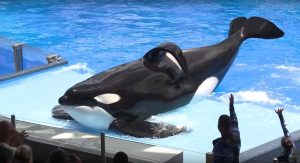
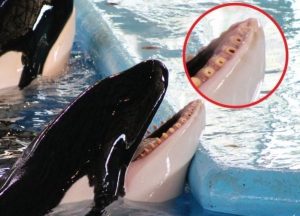
In 2016, Copenhagen Zoo “destroyed” a healthy 18-month-old giraffe solely because his gene pool had been represented well enough throughout the giraffe population. It was done in the front of a group of students and allegedly all in the name of “education”. Then, at the same zoo a couple of weeks later, four lions were killed because they were reintroducing a new male into the pack. Animals are reacting to the conditions that they are being kept in and it is affecting their health, both mentally and physically.
Earlier this month Barnum and Bailey decided to end their business and close down the operations of their circus, after 146 years of training and forcing animals to perform.
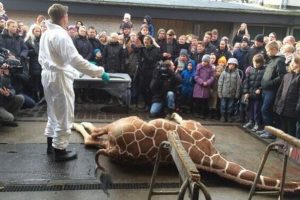
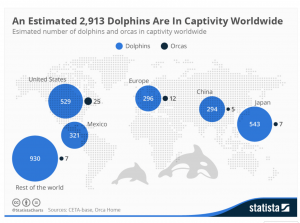
Lindy Weilgart a professor at Dalhousie University said via email
“Whales like orcas and belugas, and dolphins, are highly social. If you tear them from their social units and force them into a tiny tank with strange animals, they will naturally be stressed and this is borne out by studies looking at their (shorter) life spans and inability to produce healthy offspring in the same way as in the wild. The dorsal fins of captive orcas also flop over, which is not natural. ”
Orcas stay in pods, Which are like families. According to Seaworldofhurt.com in the ’70s humans were tracking pods, looking for the youngest ones and taking them for the purpose of making money. This is what happened to Tilikum. In the wild orcas can build a strong immune system, they learn to defend themselves, feed themselves and live where they belong. In captivity they are taught instead of how to hunt, how to jump through hoops (literally).
They are trained to let humans ride their backs. Orcas communicate through singing like many other whales, when they’re taken from their pods and put into captivity they are confined to small concrete pools and forced to live with whales who share no communication skills, ancestry decent or cultural similarities. These confined spaces often leads to conflict among the whales and fights break out causing serious damage to the whales, safety and well-being.
According to thisisplanetocean.com in Seaworld, California, 1989 a female Orca named Kandu bled to death after a self inflicted jaw injury. She spent 11 years in captivity and the injury was caused by trying to prove her dominance with another whale. She blew blood from her blowhole, she continued to bleed out in front of the public for a further 45 minutes, before dying. In the wild Orcas dorsal fin should be perfectly straight it’s the way they’re born so why should it change? If the mammal is stressed and depressed the dorsal fin will collapse. In the wild the dorsal fin collapsing only happens to 1% of the populations, this is because the whale can swim and can exercise it so it doesn’t wilt. It will only wilt if it doesn’t have enough space to swim. It’s not only the fins that suffer, their teeth break too. Out of pure boredom and frustration they bite down on the metal bars breaking teeth and exposing gums, causing infections.
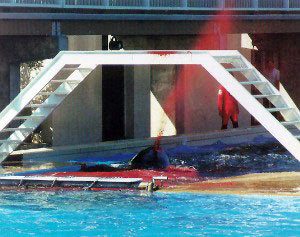
Kyle Kittleson, who used to work for SeaWorld, Orlando explained how the animals at SeaWorld receive the upmost care. After watching the “Blackfish” documentary he said
“I was shocked to see how he was painted out to be this terrible creature unhappy in a movie . . . that is not true.”
Marineland was asked to comment but didn’t respond. According to the Toronto Star Marineland has recently been charged with a further six counts of animal cruelty referring to its elk, deer and fallow deer. According to reports, the mammals were not provided with the correct food, shelter, water and necessary veterinary care. The report also said thats
“When we all start to direct our passion logically, rather than emotionally, I think we will see the lives of all animals – both in the wild and under the care of man improve drastically.” Kittleson added.
